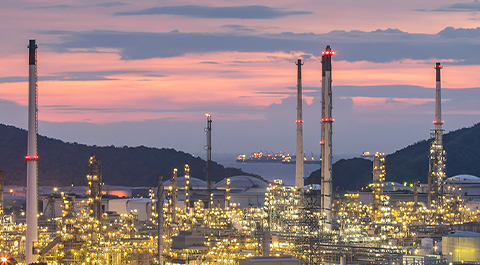Optimizing gas cooling applications represents a unique problem. Gasses produced by industrial chemical and power plants must be cooled and scrubbed of toxins before they're released into the atmosphere. These gasses must enter a cooling tower to be cooled and scrubbed; however, the temperature and chemical makeup of these gasses makes physical testing impossible. Therefore, it's difficult to assess the process and optimize the overall application.
Using CFD, however, we can virtually simulate these environments and scenarios to find an optimal solution for our customer. In this case, our customer wanted just that. By providing the cooling tower's layout and some specifics about the system and process, our customer hoped to assess the effectiveness of a new spray system for the gas cooling operation.


